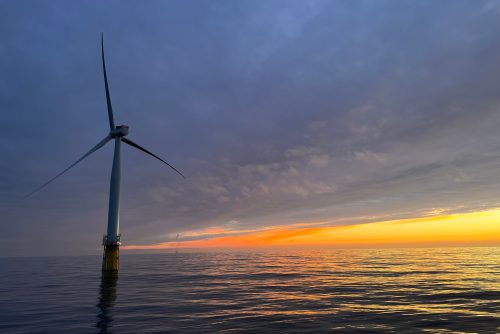Thousands of jobs will be created by new floating wind farms in Celtic Sea

Up to 5,300 new jobs and up to £1.4bn could be generated for the UK economy by galvanising the supply chain and infrastructure opportunities arising from the development of new floating wind farms off the coast of the South West.
The independent study, The Celtic Sea Blueprint, conducted by Lumen Energy & Environment, looked at the minimum requirements needed to deliver the first three projects outlined by The Crown Estate in December.
It also examined the gaps, such as ports deep enough for handling the giant turbines, vessels to service the sites, and export cables to transport electricity to land.
Addressing these gaps will be critical to establishing these first wind farms, and, with a further pipeline of wind farms expected in the region as well as rising global demand, the opportunities for ports, manufacturers and the wider supply chain could be far greater. Action is required now, locally and nationally, to capture the opportunities associated with this fast, growing innovative new technology.
The first three floating windfarms, which will be able to generate up to 4.5GW of electricity – enough to power more than four million homes, will be some of the largest in the world. And, as the first in the UK outside of Scotland, mark a new phase for offshore wind in England and Wales.
The South West has the potential to be at the forefront of driving this development with opportunities from port infrastructure to significant SME support across the supply chain.
In particular, the research highlighted opportunities for the region from the assembly of the large floating platforms needed to house the turbines, building on the existing local high-skilled welding and concrete expertise and existing local suppliers. It highlighted opportunities for local ports across the region from the assembly, transport and storage of parts during the construction and life-cycle of the sites, while the region’s strong shipping expertise could also be of benefit during the development stages.
More generally, the first three windfarms alone will need:
- More than 260 turbines spread across the three sites, each some 300 metres tall, around the same height as The Shard, on a floating platform about the size of a football pitch
- More than 1000 anchors to secure the floating turbines to the seabed, with at least 300km of mooring lines
- Nearly 900km of cables – nearly enough to stretch from Lands’ End to John o’ Groats, to link up turbines and connect them to the electricity network
Gus Jaspert, managing director of marine at The Crown Estate said: “Floating wind is an incredibly exciting opportunity for the region and the nation. It will boost clean electricity generation by unlocking the deeper waters of the Celtic Sea not previously accessible by fixed turbines and providing greater access to wind blowing from the west.
“The benefits though are even more wide-ranging, opening up wider local and national opportunities for manufacturers and the supply chain, from cables to platform construction to port development, creating thousands of new jobs and skills.
“But there are also gaps in the market. If the UK is to make the most of the economic and environmental opportunities from the transition to renewable energy, we must be on the front foot, acting now to develop the supply chain capability, skills and infrastructure needed to establish not just these wind farms but future floating wind farms in the Celtic Sea and elsewhere. Using this research, we want to work with the industry, trade organisations, local communities and across governments to make sure we are harnessing all the available opportunities and supporting the UK in continuing to accelerate its world-leading position in offshore wind.”
The Crown Estate is now focussed on bringing key parties together to create an action plan for developing supply chain and infrastructure capabilities in the region and across the UK.
This includes looking at funding and investment options to accelerate supply chain projects, including a pilot £10m fund from The Crown Estate to support early-stage projects looking to capture some of the opportunities identified in the research.
The formal tender process for the floating wind farms starts at the end of the month.









